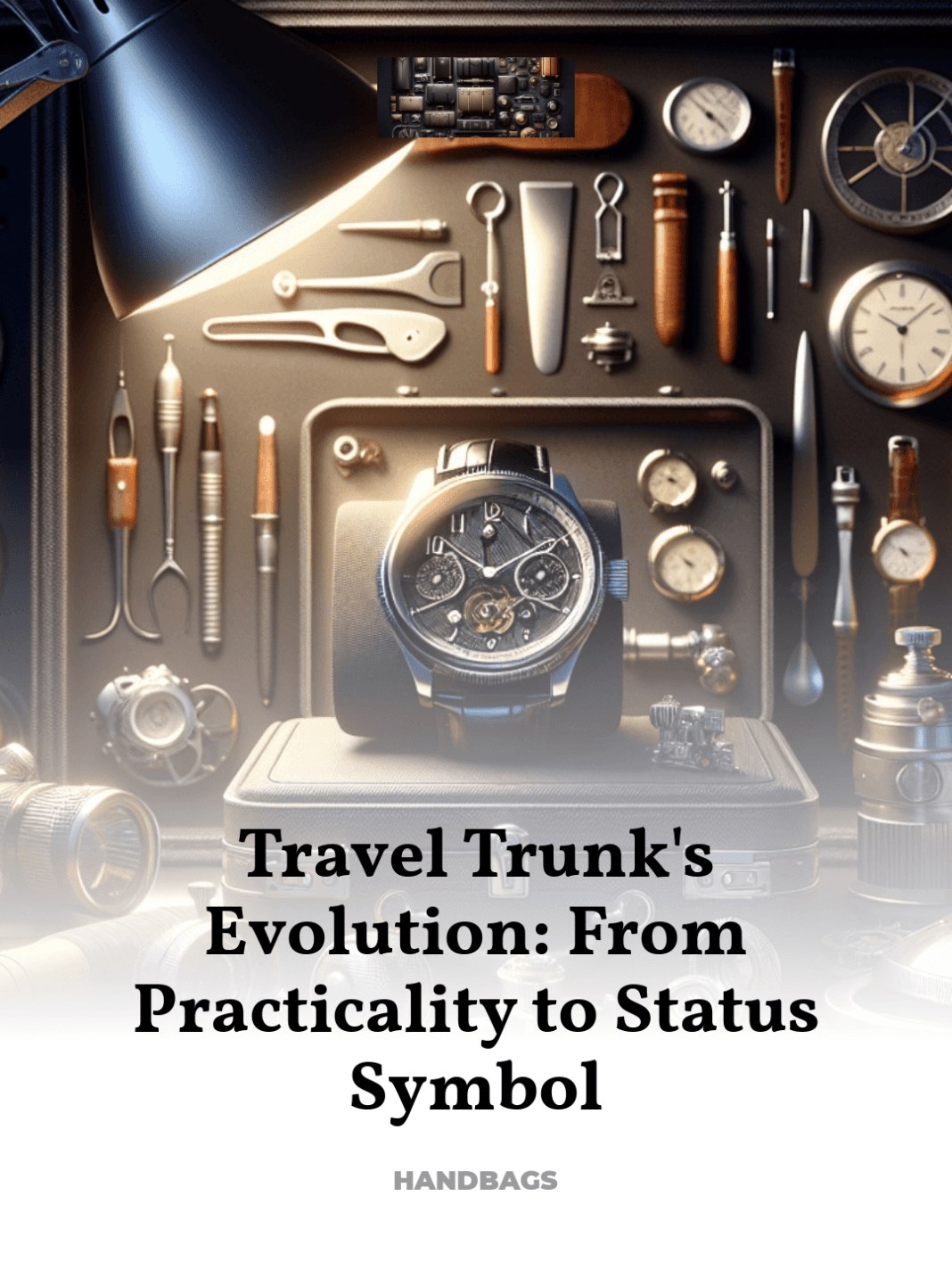How luxury luggage transformed from practicality to status symbol
The travel trunk, once a mere storage solution for long voyages, has transcended its utilitarian origins to become a symbol of luxury and status. This transformation reflects broader cultural shifts and the evolving narrative of travel itself.
- Historical Origins of the Travel Trunk
- Design Innovations and Luxury Integration
- Iconic Brands and Their Influence
- Cultural Impact and Symbolism
- Modern Relevance and Future Trends
Historical Origins of the Travel Trunk
The journey of the travel trunk begins in the late 17th century, a time when travel was predominantly the preserve of the aristocracy and the affluent. These early trunks, crafted from wood, leather, and metal, were designed to withstand the rough handling of long sea voyages and overland treks. The main function was to protect their contents, which often included the finest clothing, linens, and personal items.
As travel methods evolved with the advent of railroads in the 19th century, so too did the trunk. The need for sturdier and more secure luggage led to innovations such as iron bindings and intricate lock mechanisms. It was during this period that trunks began to be seen not just as functional items, but as reflections of their owner’s status and taste.
Key Features and Materials
- Wood: Early trunks were primarily made of wood for its durability and ease of craftsmanship.
- Leather: High-quality leather was often used to cover the wood, providing moisture resistance and aesthetic appeal.
- Metal: Iron and later brass were used for reinforcements and decorative elements, adding to the trunk’s robustness and elegance.
Design Innovations and Luxury Integration
The golden age of travel in the early 20th century saw the travel trunk evolve into a luxury item. Designers began to experiment with materials and form, integrating luxury into the very fabric of luggage. Brands like Louis Vuitton and Goyard were at the forefront, turning trunks into fashionable accessories adorned with their now-iconic logos and patterns.
These trunks were not only about aesthetics but also showcased remarkable craftsmanship. The introduction of lighter, more durable materials such as vulcanized fiber and aluminum made luxury trunks both stylish and practical. Customization became a trend among the elite, with trunks designed to fit perfectly into specific car models or to hold particular items like hats, shoes, or even books.
Innovative Features
- Custom Compartments: Trunks were designed with specific compartments for different types of clothing and accessories, reflecting the meticulous lifestyle of their owners.
- Portability: Despite their robust construction, these luxury trunks were crafted to be as lightweight as possible, accommodating the needs of frequent travelers.
- Security: Advanced locking mechanisms ensured the safety of the valuables within, an essential feature for those traveling with precious items.
Iconic Brands and Their Influence
The transformation of the travel trunk into a status symbol is inextricably linked to the rise of iconic luxury brands. Louis Vuitton, founded in 1854, began by designing flat-topped trunks that were easier to stack than traditional rounded-top models. This innovation not only changed how trunks were made but also set a new standard in luxury travel goods.
Goyard, another venerable brand, offered an unparalleled level of customization, catering to the whims of its wealthy clientele. Their trunks could be made to order with a variety of colors, materials, and personal monograms, making each piece distinctively personal and highly exclusive.
Brand Signatures
- Louis Vuitton: The LV monogram canvas, introduced in 1896, was designed to prevent counterfeiting and became a symbol of luxury worldwide.
- Goyard: The Goyardine canvas, created in 1892, is known for its durability and distinctive chevron pattern, often seen as a status symbol among the elite.
Cultural Impact and Symbolism
The luxury travel trunk embodies more than just the ability to transport belongings securely and stylishly; it represents a rich tapestry of history, culture, and artisanship. As a cultural artifact, the luxury trunk mirrors the societal changes over the centuries, reflecting the shifting tides of economic power, technological progress, and aesthetic values.
In literature and film, the travel trunk often appears as a metaphor for adventure, discovery, and the mysteries of the unknown. It has secured a place in the collective consciousness as a romantic symbol of the golden age of travel.
Symbolic Representations
- Adventure and Exploration: Trunks evoke images of grand voyages and explorations, often featured in tales of epic travels and exotic destinations.
- Status and Prestige: Owning a luxury trunk signals wealth and a refined taste, associated with the glamour of high society and aristocracy.
Modern Relevance and Future Trends
Today, the travel trunk has adapted to modern needs while retaining its luxurious allure. Brands like Rimowa have redefined what a travel trunk can be, offering high-tech materials like polycarbonate and aluminum, blending heritage with innovation.
The future of luxury trunks lies in their ability to combine tradition with cutting-edge technology. Smart trunks equipped with GPS trackers, digital locks, and other high-tech features are on the horizon, promising to redefine the boundaries of luxury travel once again.
For further exploration of the evolution of luxury luggage, visit authoritative sources such as the LVMH archives.



